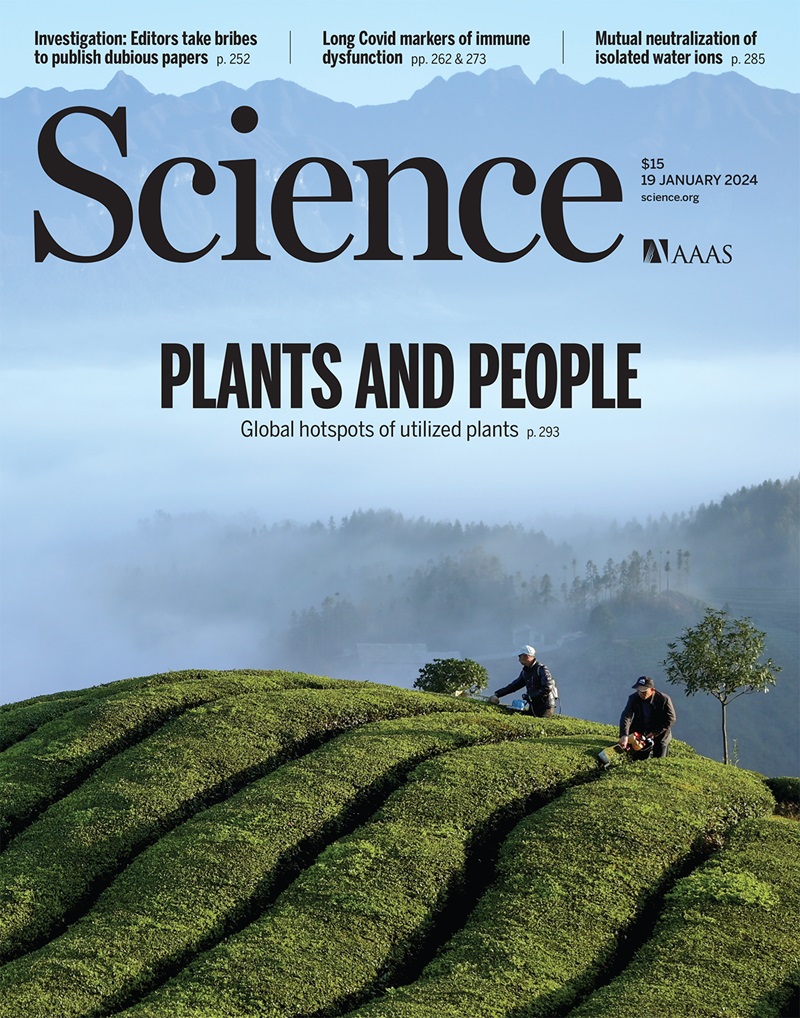Surface conduction and reduced electrical resistivity in ultrathin noncrystalline NbP semimetal
IF 45.8
1区 综合性期刊
Q1 MULTIDISCIPLINARY SCIENCES
引用次数: 0
Abstract
The electrical resistivity of conventional metals such as copper is known to increase in thin films as a result of electron-surface scattering, thus limiting the performance of metals in nanoscale electronics. Here, we find an unusual reduction of resistivity with decreasing film thickness in niobium phosphide (NbP) semimetal deposited at relatively low temperatures of 400°C. In films thinner than 5 nanometers, the room temperature resistivity (~34 microhm centimeters for 1.5-nanometer-thick NbP) is up to six times lower than the resistivity of our bulk NbP films, and lower than conventional metals at similar thickness (typically about 100 microhm centimeters). The NbP films are not crystalline but display local nanocrystalline, short-range order within an amorphous matrix. Our analysis suggests that the lower effective resistivity is caused by conduction through surface channels, together with high surface carrier density and sufficiently good mobility as the film thickness is reduced. These results and the fundamental insights obtained here could enable ultrathin, low-resistivity wires for nanoelectronics beyond the limitations of conventional metals.
超薄非晶NbP半金属的表面导电性和降低电阻率
众所周知,由于电子表面散射,传统金属(如铜)的电阻率在薄膜中会增加,从而限制了金属在纳米级电子学中的性能。在这里,我们发现在相对较低的400°C温度下沉积的磷化铌(NbP)半金属的电阻率随着膜厚度的减少而不同寻常地降低。在厚度小于5纳米的薄膜中,室温电阻率(1.5纳米厚的NbP约为34微米厘米)比我们的体NbP薄膜的电阻率低6倍,低于相同厚度的传统金属(通常约为100微米厘米)。NbP薄膜不是结晶性的,而是在非晶态基质中显示出局部纳米晶、短程有序。我们的分析表明,较低的有效电阻率是由于通过表面通道传导,以及随着薄膜厚度的减小,表面载流子密度高和迁移率足够好。这些结果和在这里获得的基本见解可以使纳米电子学的超薄、低电阻率导线超越传统金属的限制。
本文章由计算机程序翻译,如有差异,请以英文原文为准。
求助全文
约1分钟内获得全文
求助全文
来源期刊

Science
综合性期刊-综合性期刊
CiteScore
61.10
自引率
0.90%
发文量
0
审稿时长
2.1 months
期刊介绍:
Science is a leading outlet for scientific news, commentary, and cutting-edge research. Through its print and online incarnations, Science reaches an estimated worldwide readership of more than one million. Science’s authorship is global too, and its articles consistently rank among the world's most cited research.
Science serves as a forum for discussion of important issues related to the advancement of science by publishing material on which a consensus has been reached as well as including the presentation of minority or conflicting points of view. Accordingly, all articles published in Science—including editorials, news and comment, and book reviews—are signed and reflect the individual views of the authors and not official points of view adopted by AAAS or the institutions with which the authors are affiliated.
Science seeks to publish those papers that are most influential in their fields or across fields and that will significantly advance scientific understanding. Selected papers should present novel and broadly important data, syntheses, or concepts. They should merit recognition by the wider scientific community and general public provided by publication in Science, beyond that provided by specialty journals. Science welcomes submissions from all fields of science and from any source. The editors are committed to the prompt evaluation and publication of submitted papers while upholding high standards that support reproducibility of published research. Science is published weekly; selected papers are published online ahead of print.
 求助内容:
求助内容: 应助结果提醒方式:
应助结果提醒方式:


